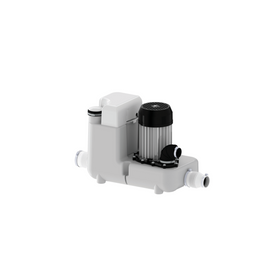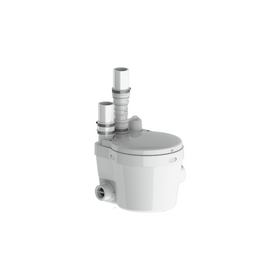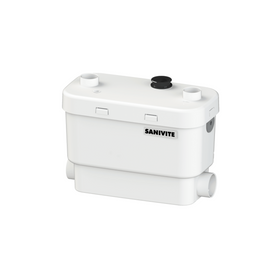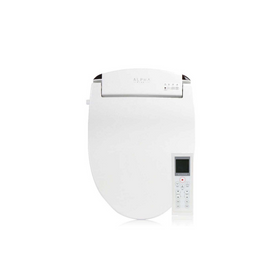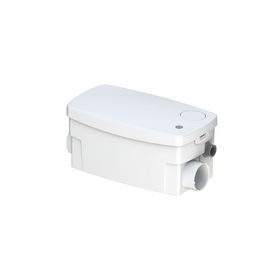
The Keys to A Healthy Bathroom
Last Updated: Feb 13, 2025Whether spartan or spa, the bathroom is the one room that everyone uses. It needs to be utilitarian and an oasis while maintaining a healthy space for your family to use.
Table of Contents
- Water, Water Everywhere
- Moisture Control in the Bathroom
- Water Conservation
- Bottom Line

Water, Water Everywhere
Water makes things wet, and wet materials can lead to rot and mold. It seems like common sense, but when it comes to our buildings and building materials, we need to ensure this does not occur and stop it before it starts. The bathtub and shower stalls are the most critical locations to focus on typically since they see the most splashing of water and flexing of building materials.
Start With an Inspection
Often, the tub and shower are together as one unit. If you have two separate fixtures, the same information applies, but double the inspections. The tub flexes in place, even though it's made of steel or acrylic. The wall tub surround can be made up of acrylic, panel board, or tiles. These wall elements don't move much. There needs to be a flexible barrier system at the joint between the tub and the wall. This system will stop the water from gaining access to the dark recesses behind the walls. This barrier is often a simple seam of caulking. Inspecting the caulking should be carried out on a relatively regular basis. If you can get a fingernail behind the caulking, that means that water can get behind as well, which means that you could have a water issue behind your walls. If your caulking is looking loosey-goosey, then change it out.
I recommend zero VOC caulking, of which there are more and more brands becoming available at building supply stores. Removal of the old caulking is easy with specific tools or plastic scrapers. The old caulking must be removed before applying the new caulking.

When installing new caulking along the tub/wall line, fill the tub full of water. This step helps lower the tub and creates the widest gap that the caulking will encounter. Get into the tub to caulk as well—if you can—to maximize that flex. (This might take some persuasive negotiating with your contractor, though!) Now your tub will be able to handle you and the weight of the water for a much longer time and flex within its normal range of movement. Don't forget when caulking to look around the taps and spout as well, as these are openings into the walls, and any holes are points of potential failure.
The walls need inspecting too. If they are acrylic or affordable plastic, they may need to be caulked. This step is especially vital if they are the multi-piece assembled on-site units. These units MUST be regularly inspected, as they are notorious for failure. The simple truth is the more pieces, the more problems. For tiled tub and shower surrounds, the grout must be inspected periodically. Your inspection should include checks for cracks in the grout, loose tiles, and other failure signs. If you have any of these, you should have the grout redone around the problem areas.

Use a Squeegee
So what is the best way to inspect and protect? It's actually at the end of each shower or bath. Wipe down the walls after each shower, regardless of the type of wall system you have. A $2 squeegee will take most of the water off the walls, prevent that build-up of mold and yucky stuff on your grout work and caulking, and reduce the likelihood of failure. So it's a no brainer!
How does the mold on the grout form? It arises after you turn the shower off. Why? There is no longer any momentum for the water on the walls to run down, so it goes slowly. The water moves so slowly that it stops when it hits the caulking and doesn't have the momentum to keep going into the tub. The water then sits there with some soap scum and skin cells, and it's a little party zone for mold—and that's what takes hold. By wiping down the walls, you remove the water that can help create that habitat. And, more importantly, you are using a chemical-free method to control mold in the bathtub.
Moisture Control in the Bathroom
Once you have tried to limit the water from remaining on bathroom surfaces, it's essential to recognize that moisture is in the air too. How can you control that? Read on.

Bathroom Fans to Control Moisture
Bathroom fans are critical in moving moist air out of a house. If moisture builds up, especially in the warm weather, it creates a potential for mold growth within the space and beyond. If there is laundry in the bathroom or if it is connected directly to a bedroom, it will create a higher potential for mold growth. This risk occurs as the dust and debris of clothes provide the food source and home for mold, with the high moisture content in the air being absorbed by the clothing.
Ideally, bathroom fans are hardwired into the switch to operate at all times and cannot be turned off. Alternatively, fans that have moisture or motion settings are also great options. It is important to get a quiet fan so that no notice is taken when it is running. Fans are rated in "sones" for noise, and the quieter the fan, the better. You can also find some that have external motors, which can be installed in the attic to reduce noise in the bathroom.
According to Canada Mortgage and Housing Corporation, bathroom fans should hold a piece of paper with the draw. This test indicates that the fan has the capability of removing the moisture in an average-sized small bathroom. The fan housing should also be airtight to the drywall, meaning the metal box should be sealed to the drywall with tape or spray foam. Otherwise, the fan could be drawing air from the attic into the bathroom. If this occurs, the efficiency of the unit is compromised, and air quality will be impacted. Consider an Energy Star rated bathroom exhaust fan to ensure you consume the least amount of energy during operation.
The final detail is to ensure that your bathroom exhaust fan exhausts outside and not into an attic or wall cavity. If you skip this step, it can lead to excessive moisture in your attic and mold growth. The ductwork needs to be insulated, tight, ideally solid, not flex duct, and taped at both ends and any elbows or joints. If exhausting through the roof, use an insulated duct. If exhausting out the soffit, make sure the ductwork is below the insulation.
Why not just natural ventilation? Many people will only open a window and consider that to be enough to control moisture. That might work if the window faces the house's downwind side, meaning it will draw the air out. My bathroom window faces west, towards our prevailing winds, so it just blows air in, not out, and doesn't offer much moisture exhaust. Ensure your "natural solution" is, in fact, a solution.

Plants to Control Moisture
Plants are a great addition to any bathroom, especially if you want to make the room a peaceful oasis. Typically, there is enough moisture in the air for many water-loving plants to thrive. They also can improve air quality in a home (as long as they are not overwatered, thereby creating mold).
Try some bamboo pieces in a large floor vase if you can't grow plants. Bamboo is a hygroscopic material, meaning that it will absorb or expel water or moisture from its surrounding environment.
Finishes to Control Moisture
Healthy bathrooms can be beautiful, with elements that resist moisture and rot. Tiles are a great example. When properly installed, tiles should last generations with their beauty and durability. However, durability is only guaranteed when installed on a solid secure tile/cement board. Many, unfortunately, skip this step and install it on drywall or with a simple plastic barrier. Both can lead to water damage behind the tiles and should be avoided. Good quality, low-VOC adhesive, low-VOC moisture-resistant grout, and a low-VOC sealer over your grout will maximize the health of your installation.
Solid wood cabinetry is a better choice than particleboard. It can handle water spills better than pressed sawdust materials.
Clay paints and plasters can help reduce and even out the moisture in your bathroom. They can safely store water from the air when it is damp and release it when it is drier. And - they can add stunning texture and color to the room.
In the winter, hot water radiators help warm tiled surfaces, making the whole space comfortable. Even bathroom towel bars are radiators, delivering warm towels to you simultaneously.
Water Conservation
Water efficiency is a constant issue, as the planet's health needs to be considered, even in your spa. You can save water by purchasing more water-efficient toilets such as dual flush or very low flush toilets such as 4.8L/1.3 gallon-per-flush toilets. Your showerhead, a virtual oasis some days, can also be reduced to even 5.7 Litres per minute or 1.5 gallons per minute. Even at these efficient rates, it will still deliver similar pressure, so you don't have to sacrifice. Keeping the sink tap off while brushing your teeth and getting an inexpensive faucet aerator will reduce your costs and help you do your part to save water. Refer to our rebates page for water-saving rebates in your area.
Bottom Line
I focus on helping homeowners ensure their home remains a healthy place to live in my work. Maintaining a healthy home is one of the primary tenets of a more sustainable home—and the bathroom is a great place to start.
Editor's note: this is a republish of the first in our Healthy Home Series by our expert contributor Stephen Collette. Stephen is a Building Biologist, Building Science Consultant, LEED Accredited Professional, and a Heritage Professional. Stephen is the owner of Your Healthy House and lives in Lakefield, ON, with his wife and two daughters.
Stephen Collette
Stephen Collette is a Building Biologist, Building Science Consultant, LEED Accredited Professional, and a Heritage Professional. Stephen is the owner of Your Healthy House and lives in Lakefield, ON with his wife and 2 daughters.

